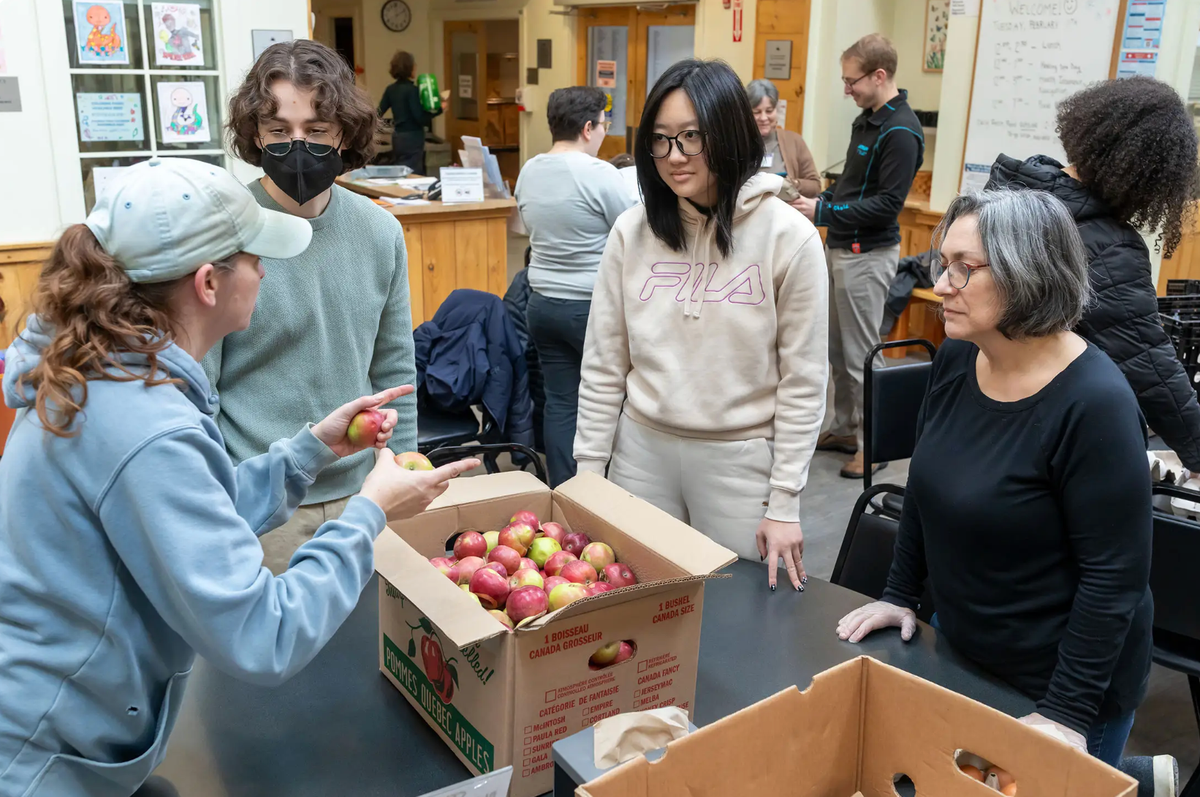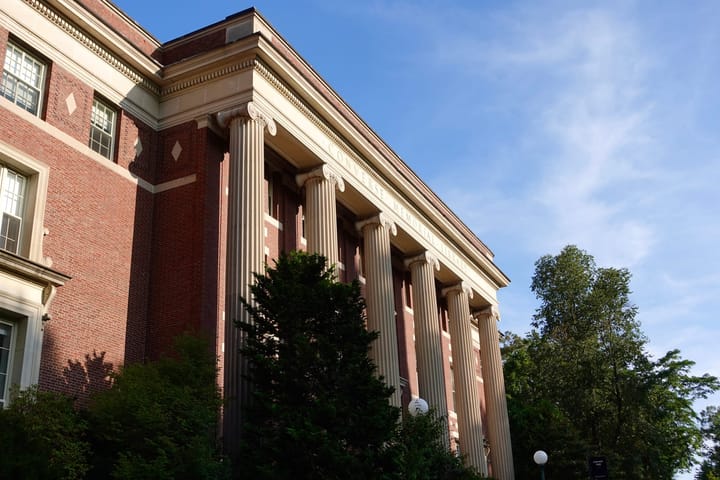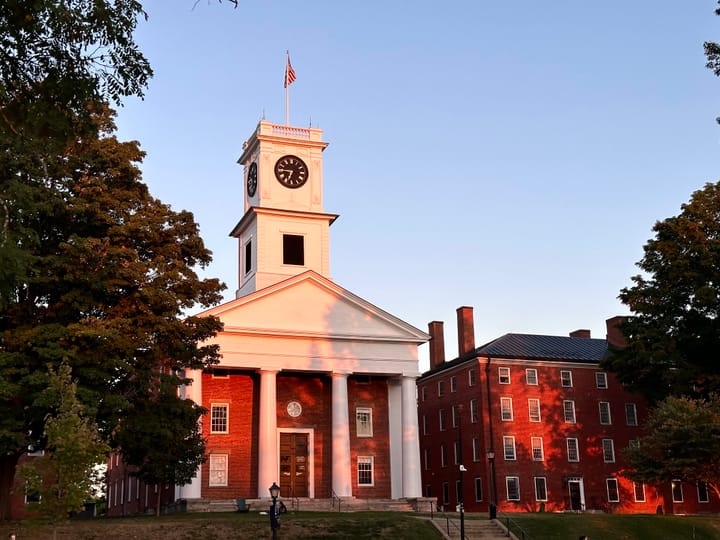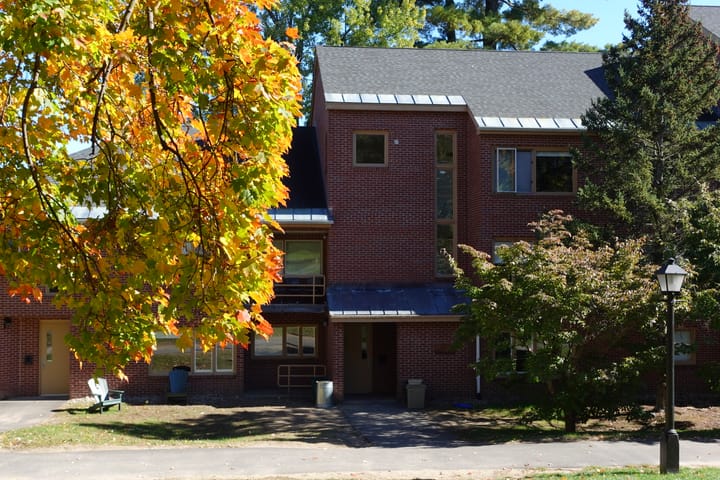Amherst Survival Center: “An Antidote to Isolation”
Since 1976, The Amherst Survival Center has devoted itself to meeting the needs of local residents. Staff Writer Olivia Law ’27 spoke with the center about how the organization connects with 10,000 community members each year.

Situated in North Amherst, The Amherst Survival Center (ASC) has been a pillar of the community since 1976. Each year, over 10,000 people rely on the center for everyday goods and services. Executive Director of ASC Lev BenEzra explained the center sits in a community “rich with things like global farms and small businesses” that are dedicated to donating and taking care of their neighbors, but also one with “an enormous amount of wealth disparity.”
Related issues, like high cost of living, are likely to intensify before it is resolved. “Current federal policies and cuts to things like [Supplemental Nutrition Assistance Program (SNAP)] benefits and Medicaid are going to cause real and deep harm across all of our communities,” BenEzra said. “We are certainly also seeing the marginalization and criminalization of area immigrants, and all of these things create a level of despair.” As the need for ASC resources increase, the center finds itself playing a pivotal role in reducing poverty and hunger throughout the Connecticut River Valley.
To see this support in action, I stopped by one of ASC’s weekly lunches and sat down with a group of strangers to discuss what the center means to them. Among them was Laura, who turned to the Survival Center after experiencing a serious health issue in 2018. Her name has been changed in this article for privacy reasons.
In the recording of our conversation, the audio is crowded by jokes and laughter in the background — evidence of shared gratitude for the space. Laura spoke to the generosity of the ASC, “I myself am completely depressed about my situation at the minute, but I am eternally grateful.”
She began to show me around the dining room, introducing me to the staff members and volunteers. “They give you tons of food,” Laura said. “They have mending and sewing — now, they’re giving people haircuts.” She went on to explain the range of resources ASC provides throughout the year, from medical tents to fresh flowers.
While there seemed to be an endless list of opportunities provided by ASC, Laura seemed most moved by the human-to-human connection. “The thing is, even if you don’t want to be close with people, you can just sit around people, and [then] you don’t have to be by yourself,” she shared.
According to BenEzra, the communal feel of ASC — created through the live music, art workshops, and even office hours with elected officials — helps “break down the stigma of coming to a space like this and build community.”
“We feed the body, but also feed the soul,” BenEzra noted. “And all of that is made possible by the relatively small team of staff and close to 300 weekly volunteers.”
ASC is mainly funded by individual and institutional donors in the area, including Amherst College (starting in 2026, Amherst College will donate $1 million annually to community organizations including ASC). However, the weekly volunteers are essential to the work ASC is able to do. Natalie Crowley ’28, an environmental studies and economics major, began working at ASC last summer, interning as an ASC Fellow with Amherst’s Office of Sustainability. In her role as a temporary staff member, Crowley was put in charge of the center’s Fresh Food Distribution program, which provides produce donated from local stores to members of the community.
Crowley eventually formed a plan to streamline the Fresh Food Distribution program, writing up organizational strategies to be used by leaders who will work in her position in the future.
While she was grateful to contribute to lasting change for the center, she shared that the impact was mutual. By spending her summer working with other volunteers and community members, she got to interact with people she would never have met on campus.
“At Amherst College, we’re kind of in our own little bubble a lot of the time, where we’re surrounded by people that are our age or that are kind of sharing the same interests as us. But at the Amherst Survival Center, I saw so many different people, and I got to have real conversations with them,” Crowley said.
Crowley is also hopeful that more Amherst students will do volunteer work outside of the college. In getting “involved in community work, we can show that we do want to be a part of Amherst’s town community,” she said.
For those interested in getting involved at ASC, many volunteers register online for weekly shifts — dedicating a few hours every week to helping out at the center. There are also fundraising events such as ASC’s annual Hike for Hunger campaign that runs throughout October. The college, as a contributor to the event, covers the cost of the event for up to 100 Amherst students, allowing them to participate for free.
In whatever capacity students get involved, BenEzra highlighted the importance of community engagement, specifically in what she defines as “a really daunting time to be a young adult.”
“I truly believe that the best antidote to fear is action, and the antidote to isolation is community — the largest opportunity to really make a difference is right here in our local communities.” BenEzra said.





Comments ()